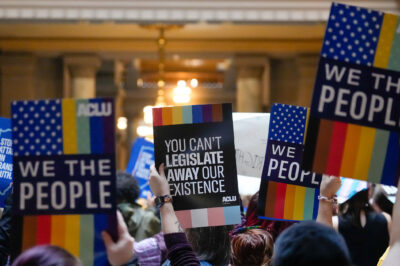Rolling Back Diversity: What's at Stake if Race is No Longer a Consideration in College Admissions?
The Supreme Court’s decision to hear a case challenging race in the admission process at the University of Texas risks taking a giant step backward in ensuring diversity in academic institutions. At stake in Fisher v. the University of Texas is the ability of the University to consider race in a careful, measured fashion in order to create a diverse educational environment and provide equal opportunity for all students to enjoy the advantages of attendance at a university which figures prominently in the social, political and economic life of Texas and the nation. Even though the Court has twice considered and approved the careful use of race in higher education admissions and elementary and secondary student assignment, the petitioner in the current case is asking the Court to undercut its earlier decisions and limit the University’s ability to create a diverse, qualified student body.
At issue is a thoughtful admissions policy that has succeeded in increasing student body diversity above previous levels, thereby more closely reflecting the state’s diversity and permitting all students to benefit from a diverse student body. Seventy-five percent of the freshman class is admitted automatically under a program which guarantees a seat to any student within the top 10 percent of his or her high school graduating class. The remaining 25 percent of students go through a process which can include a large number of individualized factors, including race, exactly the kind of plan approved by the Supreme Court in the Michigan higher education case.
The petitioner, a white student not admitted to the University of Texas who is now nearing graduation from Louisiana State University, seeks to eliminate the consideration of race entirely from the admission process and to compel the University to rely exclusively on the race-neutral, top 10 percent part of the admissions policy. If she is successful, the University could consider virtually everything from an applicant’s prowess at a sport to whether his or her grandparents attended the school. Every factor that is, except for race and ethnicity. Instead, the number of racial and ethnic minority students admitted would depend largely on a process that refuses to recognize the role of race and ethnicity in American society.
This position ignores what is arguably the most important part of the recent Supreme Court decisions. In both cases, a majority of the Supreme Court recognized that neither higher education admissions nor elementary and secondary assignments are carried out against a blank, race-neutral backdrop. Instead, as Justice Anthony Kennedy observed while contesting the idea that the country has achieved color blindness, “[t]he enduring hope is that race should not matter, the reality is that too often it does.”
Sixteen years ago, the 5th Circuit Court of Appeals forbade any consideration of race in admissions to the University of Texas in Hopwood v. Texas. Last year, the same court reversed its position in the Fisher case, relying on guidance from the Supreme Court, and upholding a plan that carefully considered race in the University of Texas admission process. The United States Supreme Court should do the same.
Learn more about racial justice: Sign up for breaking news alerts, follow us on Twitter, and like us on Facebook.



